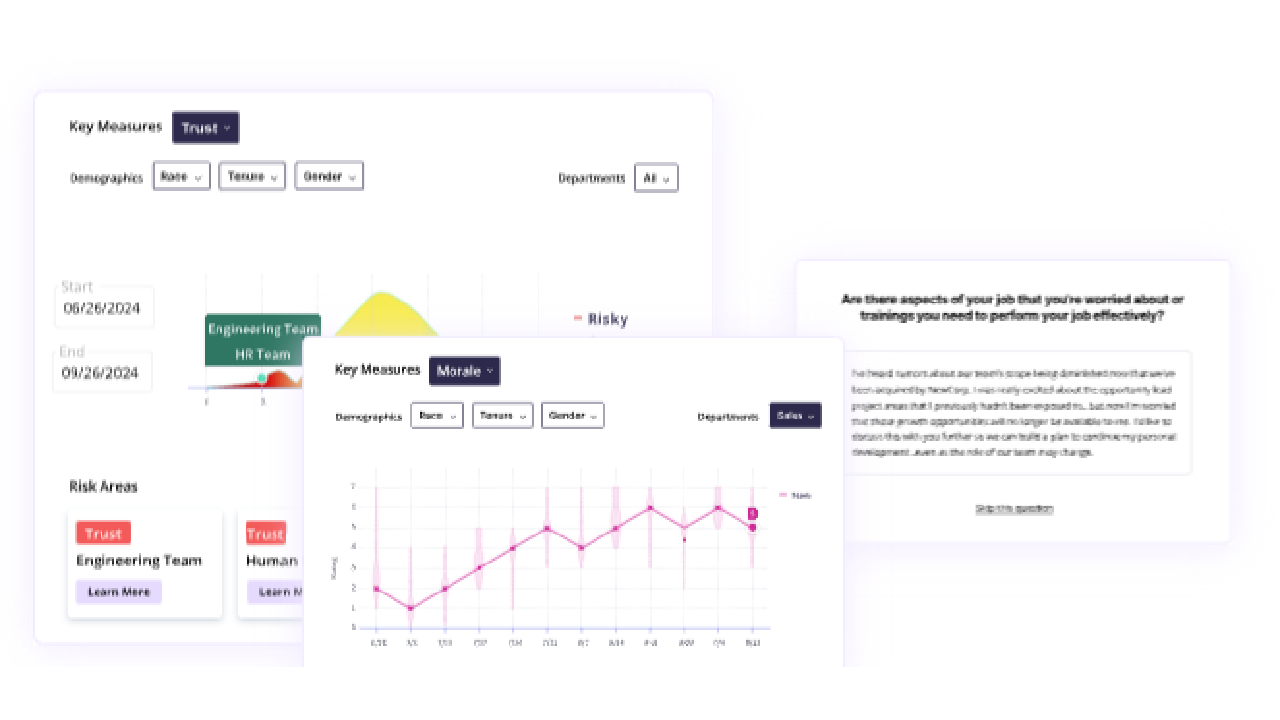In today's ever-changing leadership landscape, keeping ahead demands more than the usual management methods. The introduction of continuous feedback tools marks a significant shift, equipping leaders to tackle challenges, promote innovation, and boost organizational success. We will explore the numerous advantages that continuous feedback systems provide to leaders, highlighting how these tools are essential in the search for excellence. So let us get started.
What Is Continuous Feedback?
Continuous feedback is an ongoing and regular process of providing information, comments, or assessments on an individual's performance, behaviour, or work. Unlike traditional performance reviews, which typically occur annually or semi-annually, continuous feedback involves frequent and timely communication between supervisors, managers, or peers and the person receiving feedback.
Continuous feedback seeks to establish a dynamic and adaptable method for managing performance. Its purpose is to rapidly acknowledge achievements, pinpoint areas for improvement, and make real-time adjustments to goals. By promoting open communication, supporting professional development, and nurturing a positive work environment, continuous feedback plays a pivotal role in shaping a constructive organizational culture.
It Complements Performance Reviews
Continuous feedback complements performance reviews by providing ongoing, real-time input on an individual's work. While performance reviews offer a more formal and periodic assessment, continuous feedback offers immediate insights, acknowledging achievements and addressing areas for improvement as they happen. It creates a more dynamic and responsive system, enhancing the effectiveness of performance reviews by ensuring that employees receive consistent guidance and support throughout the year. Together, they contribute to a comprehensive approach to employee development, fostering continuous improvement and growth.
Counts Every Kind Of Feedback
Continuous feedback includes many ways to give and receive feedback, and it's not just about casual comments. While informal feedback happens in everyday, unplanned conversations, continuous feedback is a more complete way of doing it. It combines both informal, spontaneous talk and more organized, formal ways of providing feedback. In simple terms, continuous feedback is about regularly talking and giving input in various ways, making sure it covers both the everyday chats and more structured discussions about performance and goals.

One-on-One Connections
Say goodbye to generic feedback! One-on-one talks become your special tool to give personalized feedback. Instead of using the same feedback for everyone, you can choose words that match each person's style and needs. It's like sharing tips for growth in a way that really connects with them, reaching them where it counts the most. It's like giving a plant exactly the sunlight it needs – and seeing it grow beautifully!
Continuous feedback tools play a crucial role in helping employees achieve their goals. By providing a consistent and timely flow of feedback, these tools offer valuable insights that guide individuals on their journey toward success. Unlike traditional methods that might offer feedback infrequently, feedback tools ensure that employees receive ongoing support and direction.
Helps Employees Meet Their Goals
Continuous feedback is a powerful tool that greatly aids employees in achieving their goals. Unlike occasional feedback, continuous feedback ensures a steady flow of guidance and support, offering employees valuable insights to navigate their journey towards success.
One key way continuous feedback contributes to goal achievement is by providing a clear picture of individual strengths and areas for improvement. This ongoing feedback loop helps employees make informed decisions about how to approach and refine their goals, as they receive timely insights into their performance.
Moreover, Continuous feedback tools facilitate a direct line of communication between employees and their supervisors. This regular interaction allows for goal alignment, ensuring that individual objectives are in sync with the broader organizational mission. Employees can receive input on their progress, make adjustments in real-time, and stay on course toward achieving their goals.
Improves Employee Engagement
Continuous feedback significantly enhances employee engagement by creating a dynamic and supportive communication channel between employees and their leaders. Unlike traditional feedback methods that might be delayed, continuous feedback ensures that employees receive regular input on their performance. This consistent flow of information helps individuals feel valued and connected to their work.
Through ongoing feedback, employees gain a better understanding of their strengths and areas for improvement, along with a sense of personal development. This awareness not only contributes to skill enhancement but also demonstrates to employees that their growth is a priority within the organization.
Furthermore, continuous feedback provides an opportunity for leaders to express appreciation for a job well done or offer constructive guidance when needed. This balance of positive reinforcement and constructive criticism creates a supportive environment where employees feel empowered to take risks, share ideas, and contribute their best efforts.
Link Between Continues Feedback And High-Performance Cultures
Continuous feedback and high-performance cultures go hand in hand to make workplaces successful. When companies make continuous feedback a big deal and include it in their everyday work, it helps build a culture where everyone keeps getting better. It's like a spark that encourages ongoing improvement and excellence.
Continuous feedback is like a helpful guide that shows individuals and teams the way to their goals by providing data-driven insights and clear directions. This ongoing process makes employees feel responsible for their work and performance, giving them a strong sense of accountability. It also creates a friendly environment where everyone, regardless of their position, is encouraged to share feedback openly. It's not just about bosses giving feedback; it's about everyone in the organization actively participating in the conversation.
Conclusion
In today's ever-changing leadership landscape, continuous feedback stands out as an essential strategy for organizations striving for excellence. As we embrace the era of ongoing improvement and personalized growth, Unifai remains unwavering in its commitment to facilitating open communication, nurturing one-on-one connections, and supporting employees in achieving their goals. Through the integration of our specialized continuous feedback tools, Unifai continues to be a driving force in creating high-performance cultures that propel organizations toward sustained success.

No comments yet